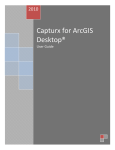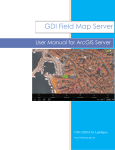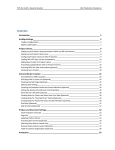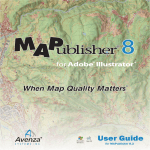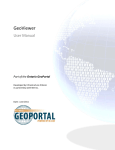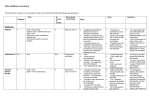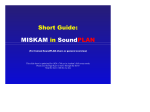Download Label-EZ v5.0 Release Notes
Transcript
Release Notes for Label-EZ and Label-Edit 5.0 What’s New in Label-EZ and Label-Edit 5.0 How to Upgrade from Prior Versions Known Issues What’s New in Label-EZ™ and Label-Edit 5.0? Label-EZ General: • • • • • • • • • • In previous versions of Label-EZ, a label’s symbol could not stretch only horizontally while maintaining the same height in order to fit a long piece of text. In this version, the user can instruct his existing symbols to stretch to accommodate long text. Note this functionality is available for output to ArcGIS and GeoMedia only. By default, Label-EZ exports the edited labels and the newly placed labels to the location as the location in which the edited labels were stored. In this version, the user can specify a different output location from the input location in which the edited labels were stored. This is available for ArcGIS and GeoMedia only. In previous versions, the user could specify one font, one font size, and one font color for all labels in a class. In this version, the user can specify an expression for each of these properties based on field values in the feature table. This allows for varying fonts, font sizes, and font colors for labels in the same class. The user can now create his own user-specified fields in the output tables created by Label-EZ and populate each of these fields with a constant value or a value retrieved from one of the fields in the label’s parent feature. This is available for ArcGIS and GeoMedia only. A new re-running option has been added that instructs the software to replace the textual contents of a FIXED label with the content of the newly constructed label from the database. In previous versions, if the FIXED label and the newly built label were different, the FIXED label would be discarded and the newly built label re-placed. In previous versions, Label-EZ did not support font names with underscores. In this version, this limitation has been lifted. A point symbol can be specified now by a TrueType or Type1 font name and a character number. For a set of point features within close proximity all sharing the same name, the ability to specify that only one label be placed for the point feature closest to the center of the cluster of point features has been added. For a large set of point features spread across a large area, a tolerance can be specified that decides how many labels are placed for this large cluster. In previous versions, the user could specify in the configuration file for an area placement rule that a label could be placed partially outside of the polygon on either side of the polygon boundary but could not specify the maximum amount allowed. In this version, the user can now specify the maximum extension allowed outside of the polygon. In previous versions of Label-EZ, the user could specify the minimum angle allowed between the label and a overlap for all line and polygon boundary • • • • • • • features. In this version, this has been expanded to allow the user to specify a separate minimum angle for each line and area feature class in the configuration file. The Label-EZ COM server has been updated to allow the user to specify whether the Label-EZ progress dialog should appear during processing. The CONTAIN, MEMBEROF, and TRIM expression operators have been updated to interpret the * and ? characters as wild-card characters. The POINTPOS property dialog in LabelConfig has been updated with a friendlier user interface. A label symbol can now be constructed by specifying either a TrueType or Type1 font in the LSF file. This is available for output to ArcGIS, GeoMedia, or Adobe Illustrator. If a multiple leaders are drawn from the same label in Label-Edit, Label-EZ will save all of the leaders on a re-run now. The ability to abbreviate multi-word strings has been added. For example, an abbreviation dictionary entry such as High School = H. S. is now valid and will be used by Label-EZ. The ability to place a label at various specific locations within a polygon has been added. For example, the user can specify that the label be placed at the upper left corner of the polygon. ArcGIS: • • • • • • Label-EZ, by default, writes the output labeling results into the schema stored in the SDE connection file specified by the user in the specification file. In this version, the user can now specify the output schema into which the labeling results should be written which may be different from the schema stored in the SDE connection file. Support for writing the label output to a file geodatabase has been added. Support for curved polygon boundaries and polylines has been added. The user can now specify the halo size of a class of labels in the specification file through LabelSpec. When the labels are displayed using the Display Labels tool, the tool will now set the reference scale to the scale at which the labels were generated. The Label Map Book tool has been updated with more polygon constraint options allowing the user to choose what region is labeled with respect to the interaction between the data frame extent and each map’s polygon extent. GeoMedia: • Label-EZ, by default, writes the output labeling results into the schema pointed to by the specified output connection in the specification file. In this version, the user can now specify the output schema into which the labeling results should be written which may be different from the schema of the • • • • • • output connection. Note that this feature only works if the tables are initially created in Append mode and using a connection whose schema is the desired output schema. Support for GeoMedia 6.1 has been added. Support has been for reading GeoMedia’s attribute-based symbology such as the line width rendered from an attribute value in the feature table. When the labels are displayed using the Display Labels tool, the tool will now set the nominal scale to the scale at which the labels were generated. Support for reading legend entries displaying text rendered by attribute-based symbology has been added. The Label Map Book tool has been updated to allow the user to label a map book without having to choose a layout smart frame when the maps are all labeled at a fixed scale. In addition more polygon constraint options have been added allowing the user to choose what region is labeled with respect to the interaction between the smart frame extent and each map’s polygon extent. Label-EZ is now correctly seeing the angle of an oriented point feature. MapInfo: • Support for complex labels has been added. Now Label-EZ can create a label containing multiple fonts, font colors, or font sizes. Adobe Illustrator: • • • The ability to re-run edited labels in Adobe Illustrator through Label-EZ and save those edits has been added in this version. The user can now perform edits in the map and save those edits to the LPF file in order to re-run the LPF through Label-EZ when map updates are required. In previous versions of Label-EZ, the order in which layers were drawn in Illustrator was controlled by the order in which layers and feature classes appeared in the specification file. In this version, the order in which all feature and text layers is drawn can be controlled from a new tool introduced in LabelSpec allowing the user to move the feature and text layers up and down within a layer list box. The ability to specify a point symbol composed from multiple TrueType or Type1 characters has been added in this version. This symbol is created in the Illustrator document. Label-Edit: General: • • • • • • • • • • • The Change Leader Properties tool has been added to the Label-Edit tool set that allows the user to select an existing leader line and either change its color, its line width, or its arrow head. This is available for GeoMedia and ArcGIS only. The Adjust Lesder Tool has been added to the Label-Edit tool set that allows the user to select an existing leader and either adjust the anchor point near the text or the anchor point near the feature by sliding the point on-screen to a new location. The user can also select a leadered label and move the label and during the move, the leader will automatically re-position itself based on the new location of the label. This is available for ArcGIS and GeoMedia only. In this version, when a label is edited, all labels associated with that label’s parent feature are made FIXED now to ensure proper re-running. This change has been made for ArcGIS and GeoMedia only. In this version has been added the ability to introduce multiple lines of text within a symbol label. This is available in ArcGIS and GeoMedia only. The ability to save the settings in the Options dialog to a file and to read those saved settings back into the Options dialog has been added in this version. This is available in ArcGIS and GeoMedia only. The ability to change the visual properties (e.g. font) of a selected set of labels or of all labels has been added in this version. This is available for ArcGIS and GeoMedia only. The ability to insert a specified spacing between the characters of a line or area feature label has been added. When this label is re-positioned along a line, the character spacing is maintained. The Select Label tool has been added that allows the user to select any part of the label and select all other parts of the label. This is available in ArcGIS and GeoMedia only. The ability to show suppressed labels on the screen and restore selected suppressed labels using the Restore Suppressed Label tool has been added. This is available for ArcGIS and GeoMedia only. The ability to choose where in a label to insert a new line character has been added. This is available in ArcGIS and GeoMedia only. The Change Label Properties tool, the Abbreviate Label tool, the Unabbreviate Label tool, and the Compose Label tool now re-conform the label to the line feature shape after the text has been updated by the operation. Also, a curved label containing two or more words can be decomposed into individual words without affecting the original curving of the label. This is available in ArcGIS and GeoMedia only. ArcGIS: • • • In this version, the structure of a label is maintained when it is suppressed or hidden which allows for that label to be restored in that same structure. For example, a line feature label whose first word is placed at the beginning of the line feature and the second word placed at the end of the line feature will be suppressed in this structure. The Generate Index tool has been enhanced to allow the user to specify a layer from the table of contents against which to index the labels instead of the grid created in the data frame. Also, the user can now specify that the labels be stored in the index in a comma-delimited format or a hierarchical format. The ability to flip, suppress, or restore multiple labels in one editing transaction has been added. GeoMedia: • • • The Mask Labels tool has been re-enabled for GeoMedia version 6.0 and higher in this version of Label-Edit. The Restore Suppressed/Hidden Label dialog and Show Placed Label dialogs have been made modeless. The Generate Index tool has been enhanced to allow the user to specify a legend entry from the Legend against which to index the labels instead of the grid created in the layout. Also, the user can now specify that the labels be stored in the index in a comma-delimited format or a hierarchical format. Adobe Illustrator: • • • • An additional set of indexing options have been added to the Generate Index tool that allows the user to specify whether symbol labels should be included in the index, whether the original text string or the text on the screen should be included in the index, whether to create the index in a comma delimited format or hierarchical format, and whether to divide the index based on layer name, feature class name, and/or a polygon layer that contains polygons into which the labels fall. The user can also specify whether to index the labels against the grid created by the Generate Grid tool or against a polygon layer that was included in the map. The Make Label Horizontal tool has been added allowing the user to quickly orient a label at 0 degrees. The Flip Label tool has been added allowing the user to select a label and generate a new baseline for the line that reverses the direction of the label along the line feature. A suite of key numbering tools has been to the Label-Edit tool bar. These tools allow the user to select a set of key numbers and generate a key table that the user can move to the desired location, to add a key number to an already existing key table, to transform a label into a key number by specifying the desired key number value, to transform a key number back into a label, and to invoke a dialog that shows all key tables existing in the document. How to Upgrade from Prior Versions For a node-locked license, simply run the Label-EZ v5.0 and Label-Edit v5.0 installers. They will automatically upgrade any prior installed versions to v5.0. For a floating license, first run the Label-EZ v5.0 installer on the server machine. This will create a Label-EZ v5.0 client installer on the server. Then, on each client machine, run the Label-EZ v5.0 client installer located on the server, in the folder: \Label-EZ\LBZClient. For details, see the Label-EZ user manual. For users of systems other than GeoMedia, ArcGIS, and AutoDesk Map, Label-Edit installs only with a node-locked license as described above. For users of GeoMedia, ArcGIS, or AutoDesk Map, install Label-Edit for a floating license in the same manner as described above for installing Label-EZ for a floating license. The Label-Edit client installer is located on the server in the folder: \Label-EZ\LEDClient. Known Issues • In ArcMap, if labels are generated at a very small scale (e.g. 5000000) and are stored in a file geodatabase, ArcMap will randomly discard some annotations.











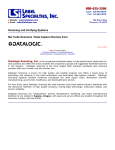
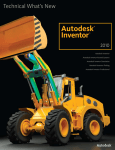
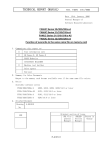


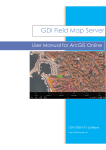
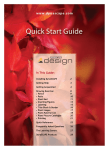
![Intergraph Geomedia [6.1-2013] User manual](http://vs1.manualzilla.com/store/data/005689587_1-58c82d14f3ba8ebe92b5c45af00d079c-150x150.png)
